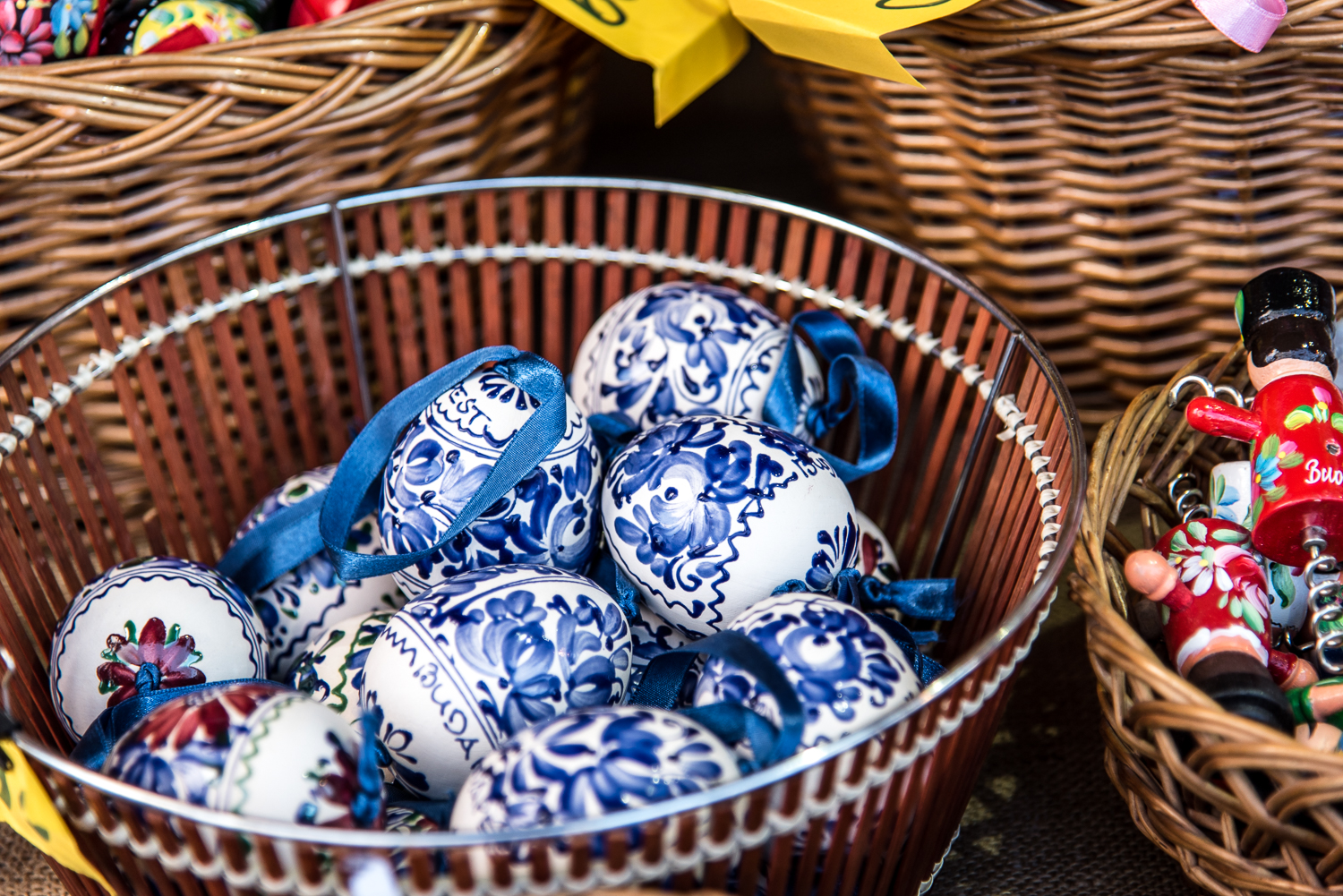Approaching Falk Miksa Street from Pest’s Grand Boulevard, you are welcomed by Peter Falk as Lieutenant Columbo from the famed TV show. Standing beside his dog, he strikes his iconic pose while thinking up his next question. It’s a bizarre but charming introduction to one of Budapest’s most curious streets.
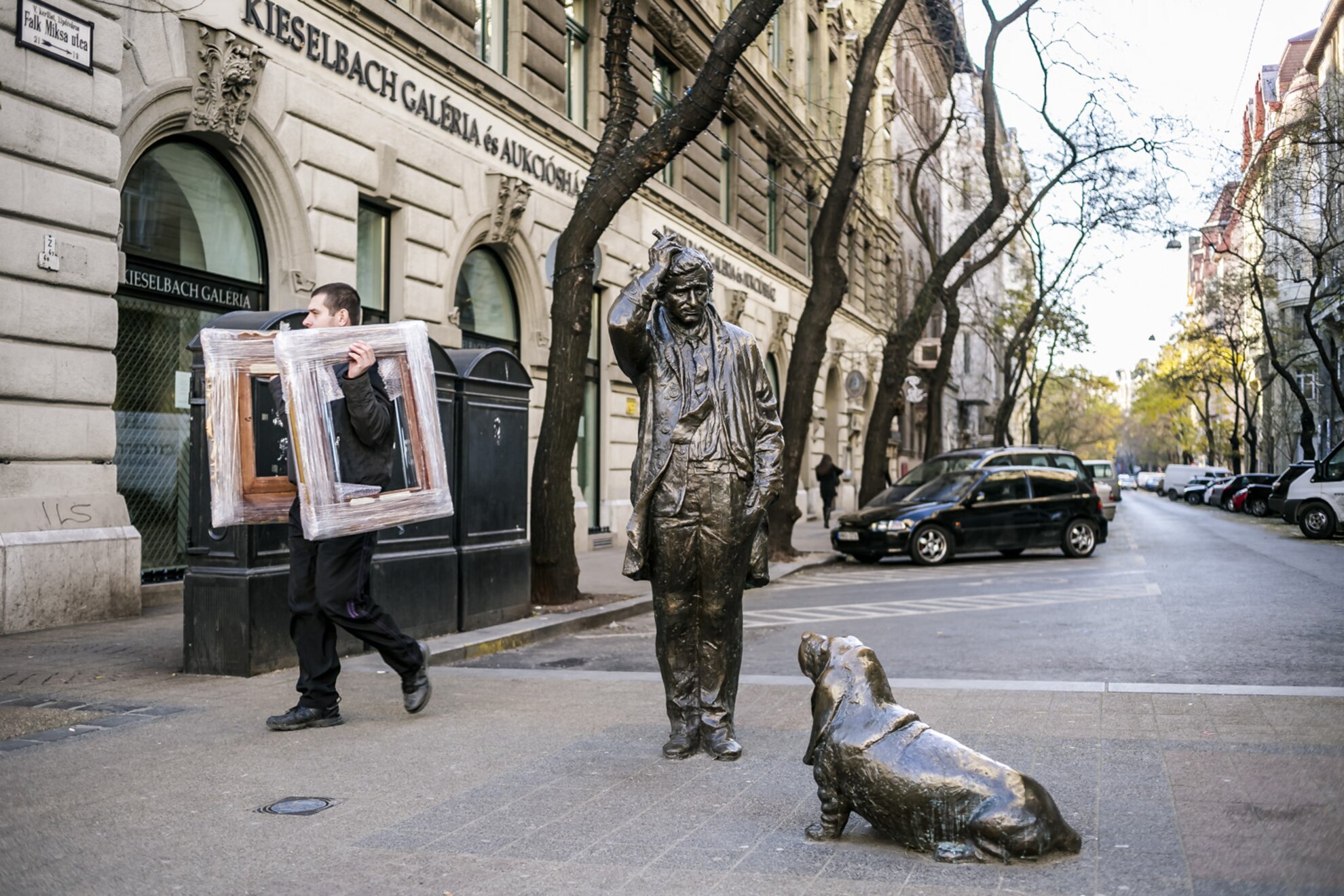
To the left of the statue is the Kieselbach Gallery, a significant cultural space for intriguing exhibitions, and grand auctions selling century-old artworks and contemporary pieces by prominent Magyar painters. Relics with a higher price tag bear the signature of realist painter József Rippl-Rónai, award-winning Hungarian Impressionist István Csók and Paris-trained János Vaszary. Kieselbach’s winter auction takes place at the Budapest Marriott Hotel on December 18th at 6pm.
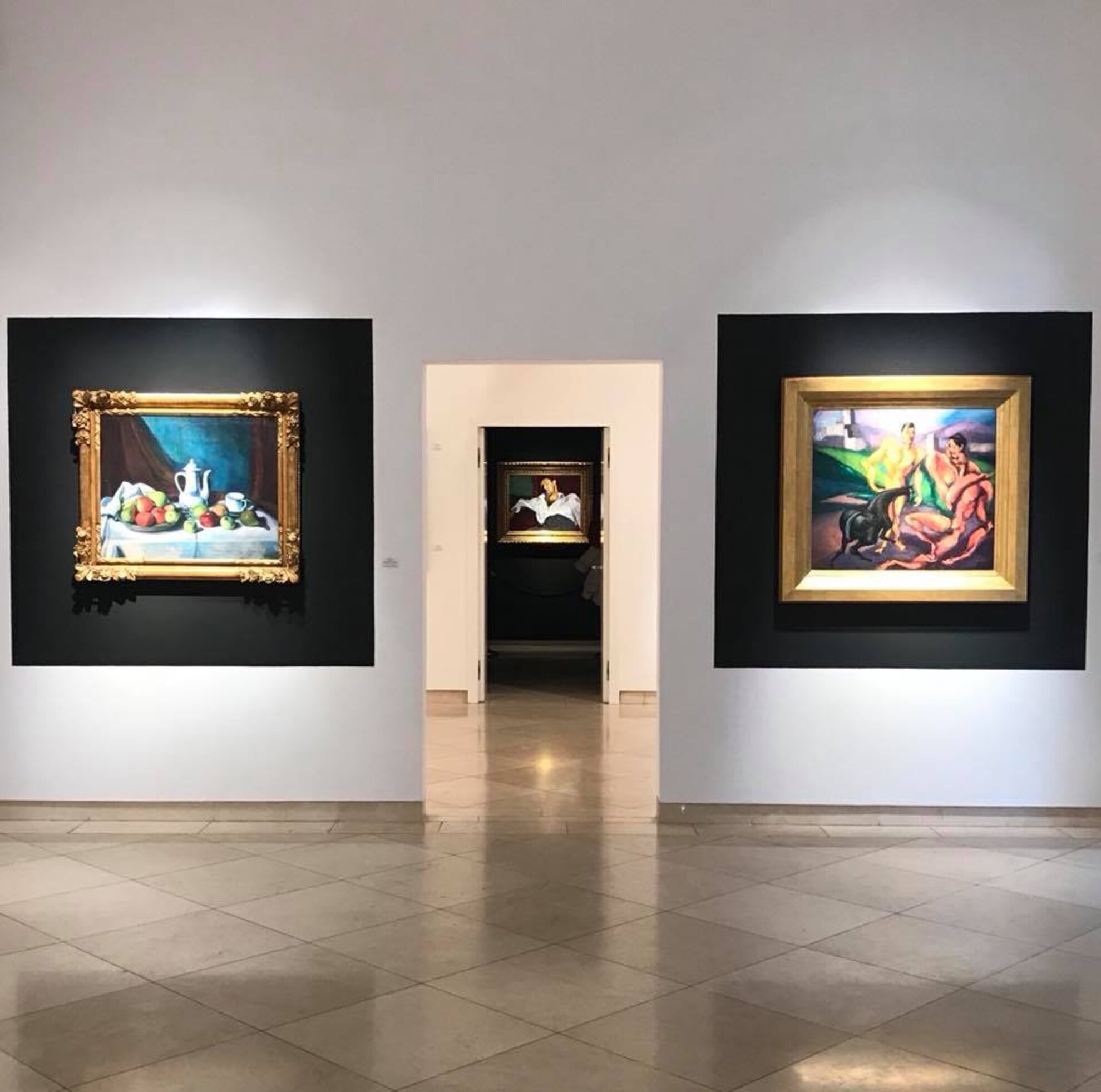
On the opposite corner, the colossal building is home to BÁV, a three-story pawnbrokers dating back to 1773, now with several outlets across Budapest. Dig into this goldmine to find finely carved period furniture, vintage jewelry, classic silverware, decorative porcelain, paintings and more; or bring your own antiques if you are short on cash.

Further down the street, Singhoffer Gusztáv sells historic timepieces, a Zenith stopwatch from 1910, vintage Longines items and century-old wooden wall clocks. Across from there, subterranean Goldbach is a treasure trove for old-fashioned furniture and antiquated knickknacks piled one on top of the other. A highlight is an 18th-century Savonarola chair, also known as the X-chair because of its characteristic shape. Dive deeper into the massive merchandise and you find 300-year-old paintings from Italy, turn-of-the-century photos, a porcelain candy dish and an ornate chessboard.
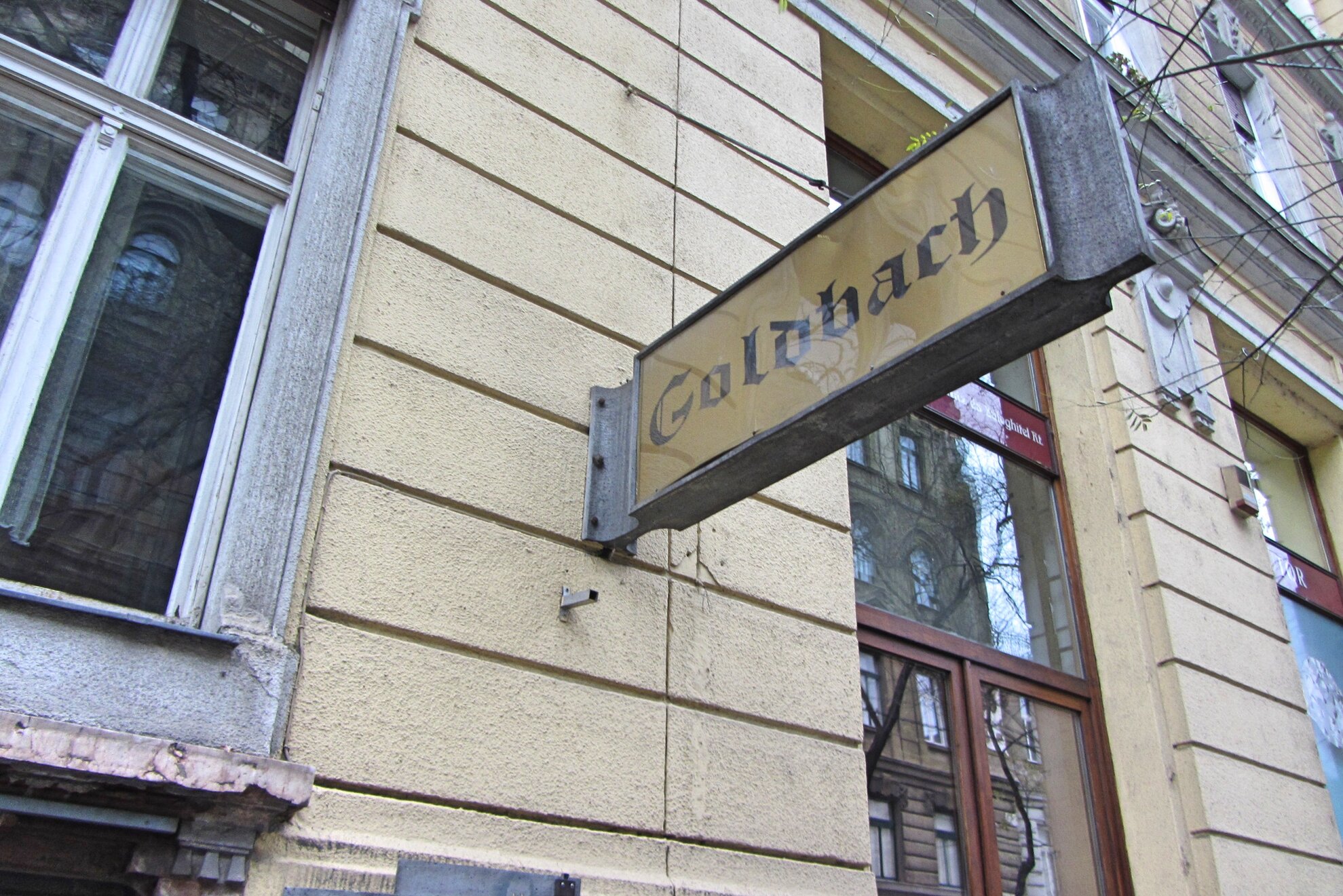
Having emerged from this underground outlet, you cruise past a couple of long-established watering holes, such as the Tokaji Borozó and Tóth Kocsma, both retro remnants from decades ago. Stopping by the MissionArt Gallery, you can admire paintings of the Nagybánya artist colony that helped modernize Hungarian art in the early 1900s, and works by contemporary artists. You are welcome to browse, and even invest in one. The gallery’s current Christmas sale runs through January 13th.
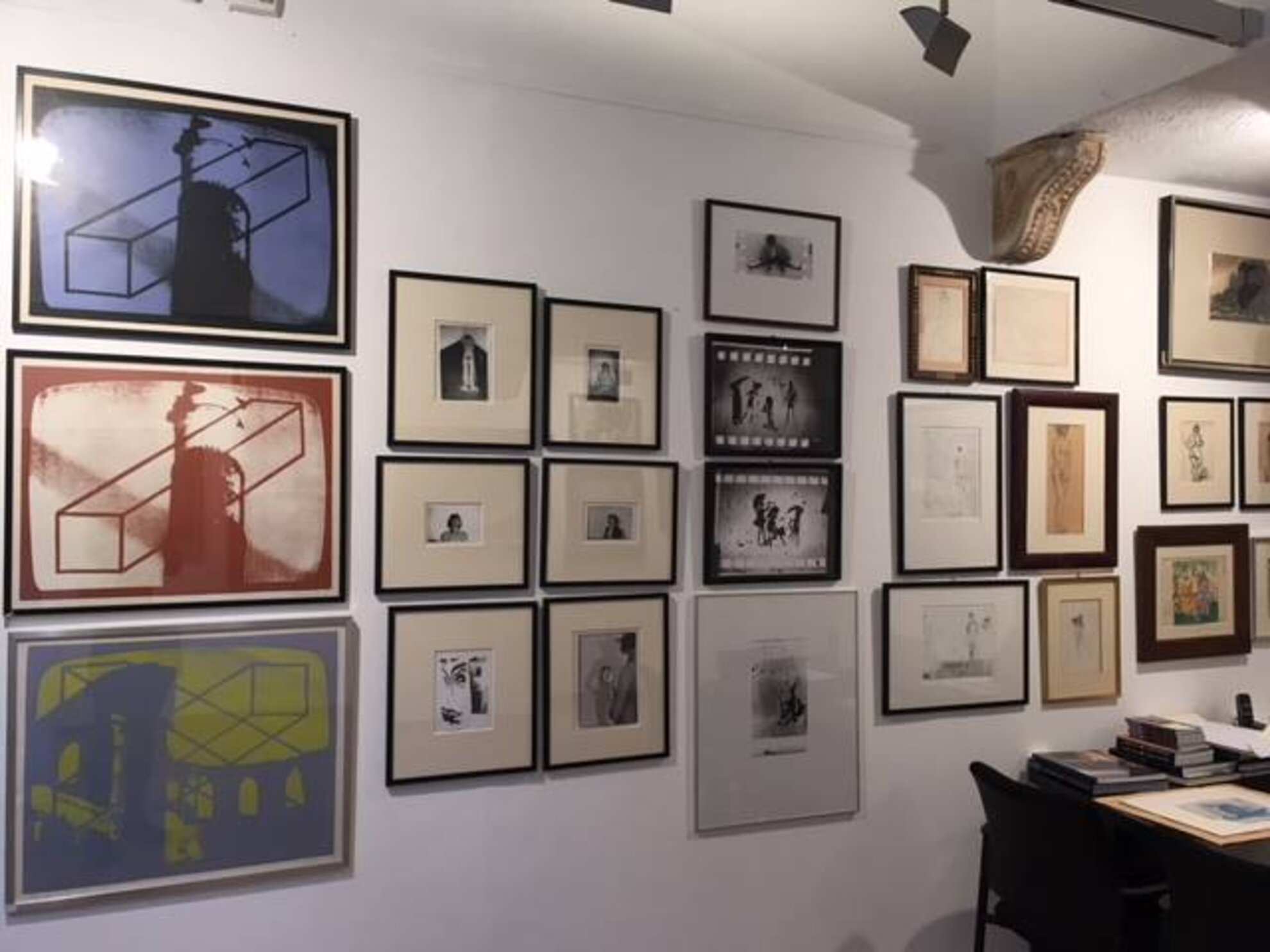
Further towards Parliament, multi-story Virág Judit Gallery draws visitors into its museum-like space, filled with a vast collection of portraits, landscapes and still lifes by great Hungarians, all on view for free. Paintings on offer here bear the names of internationally famed avant-garde artist Tivadar Csontváry Kosztka, Pál Szinyei Merse of the plein air movement, and Károly Lotz, known for his monumental murals enhancing buildings such as the Hungarian State Opera. In the gallery’s dimly lit halls, a special illumination lights up the artworks, bringing to life the scenes displayed on the walls. Virág Judit also presents elaborate porcelains produced by the renowned Zsolnay factory of Pécs.
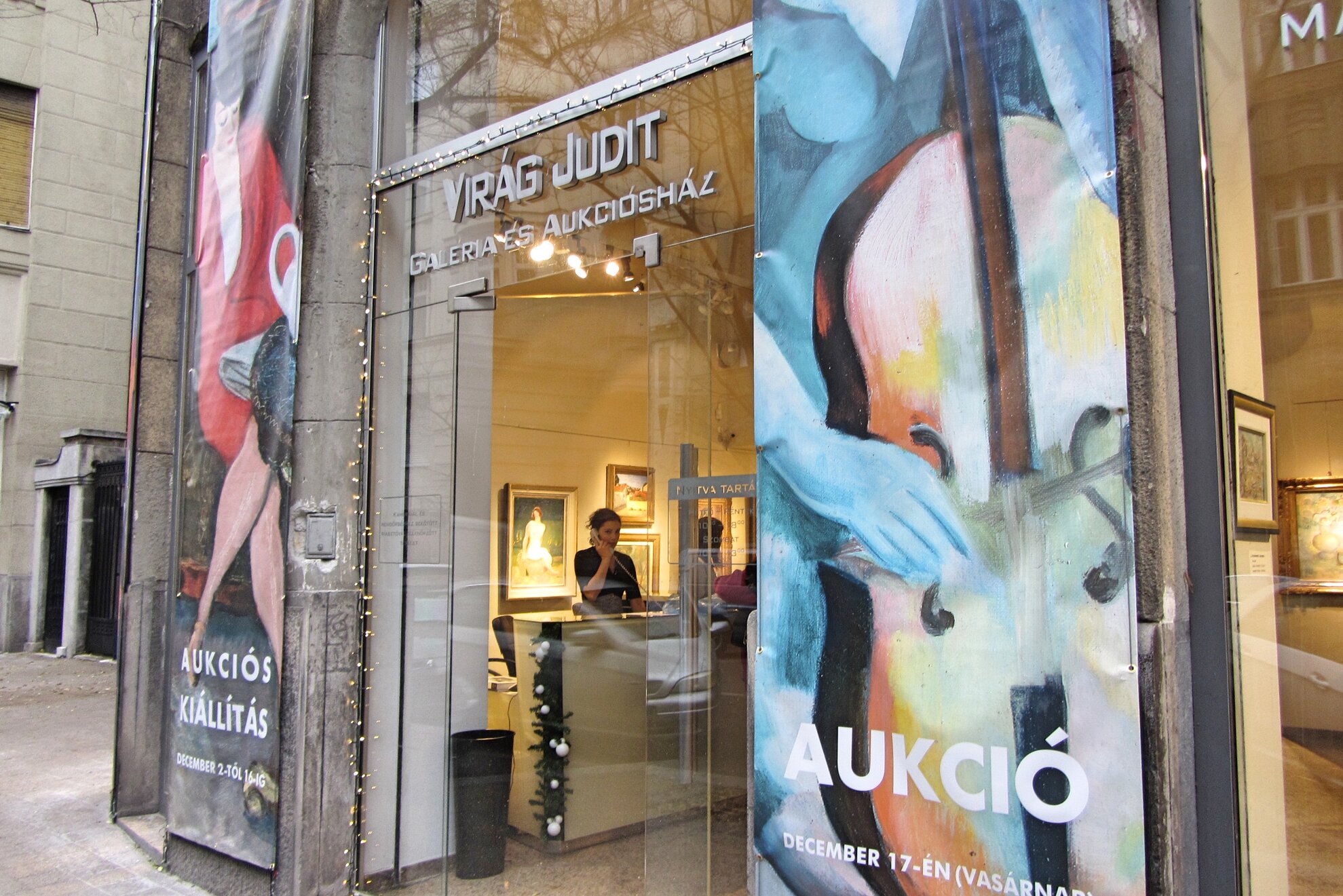
Opposite this prominent arts spot, Moró Antik brings you a slice of Eastern culture with a showcase of antiquated weapons and oriental relics from China, Japan, India and Korea. Wladis Gallery next door is where you’ll stumble upon one-of-a-kind contemporary jewelry made by silversmith and sculptor Péter Vladimir.
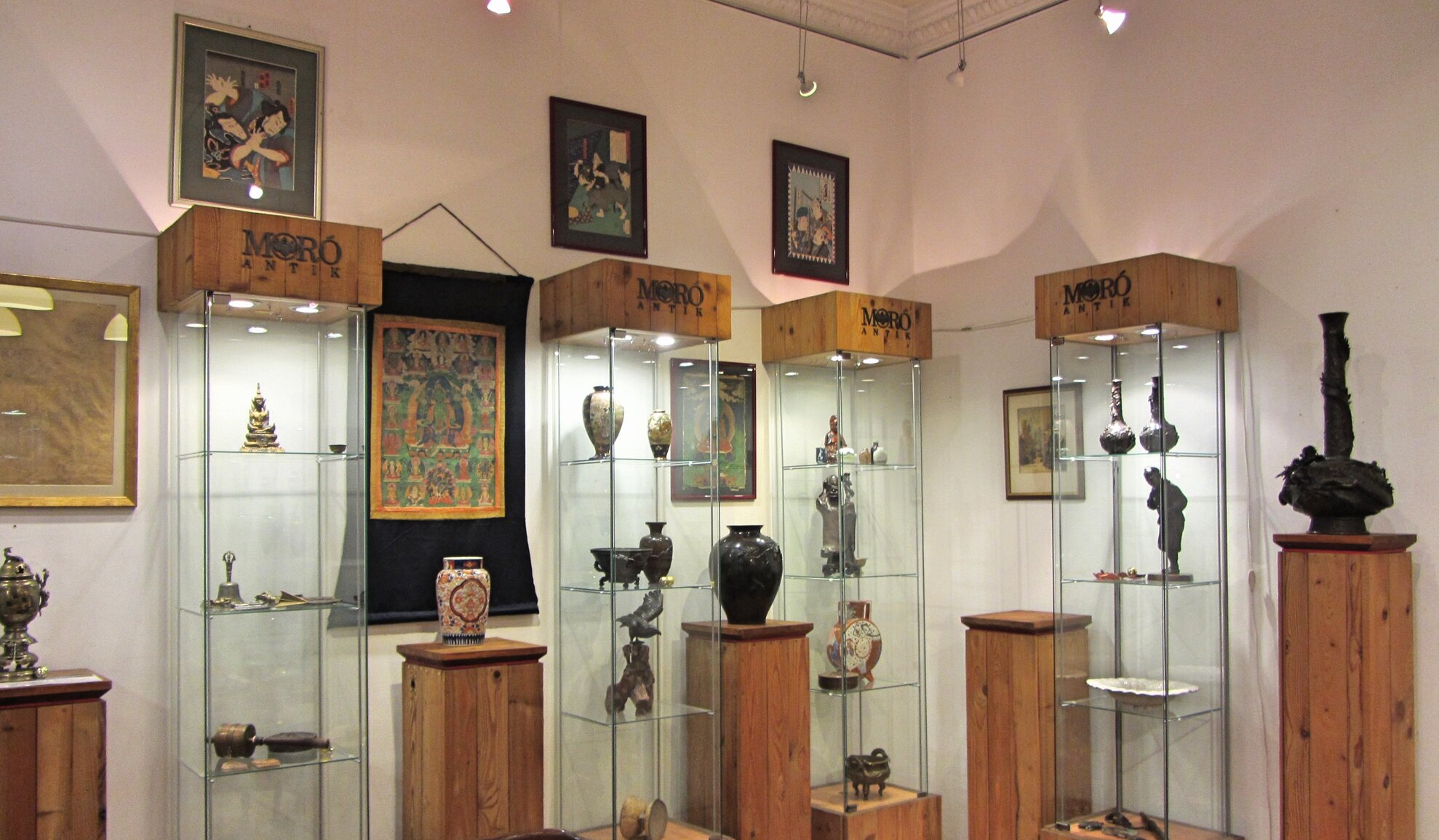
Take a quick left to find the Nagyházi Gallery just around the corner, trading period furniture, silver artefacts, classic ceramics, framed heirlooms and glassware. Crossing Balaton Street to continue along Falk Miksa, you pass a string of second-hand stores, selling furnishings of decades past and contemporary collections. Being in the business for more than three decades, jewelry designer Anikó Hári knows about a girl’s best friend. Working with silver, gold and faceted gems, this artist creates just a single piece of each accessory, making her merchandise one-of-a-kind.

For monumental lamps from the 1950s and ’60s, pop into neighboring Bardoni, a stylish showroom specializing in 20th-century interior design. On your way to Kossuth Square, don’t miss the Pintér Gallery, one of Falk Miksa’s most acclaimed attractions, its unpretentious exterior hiding an expansive emporium. An underground maze with dozens of rooms and passageways displays fine interior design, from Renaissance furniture to paintings by internationally renowned names in local contemporary art. Look out for regular auctions held online and onsite, alongside the gallery's themed events, including piano music, arts discussions and lots of champagne.
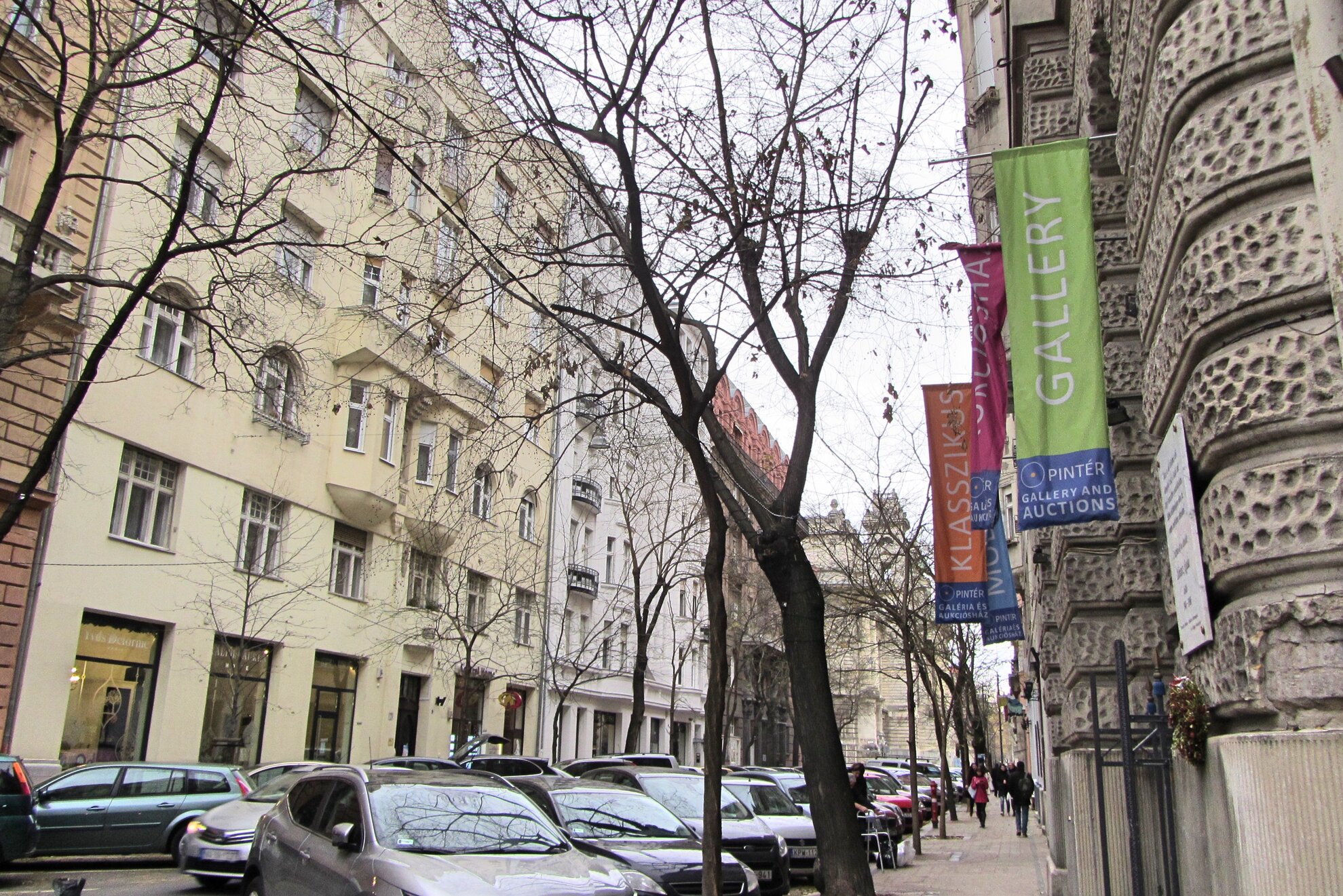
Further away and across the road, the Ural Vision Gallery invites passers-by to view free exhibitions held here regularly, highlighting Russian art. The current display features vivid visions by talented Russian contemporary artist Irina Drozd, presenting her interpretation of God as a child in her exhibition entitled, “When God Was Young”. The collection is on view through February 2018.

On the other side of the street, brightly lit Citygraph is laden with Budapest graphics, showing highly detailed hand-drawn city maps, illustration and postcards, T-shirts, even fridge magnets and coloring books featuring key landmarks in miniature dimension.
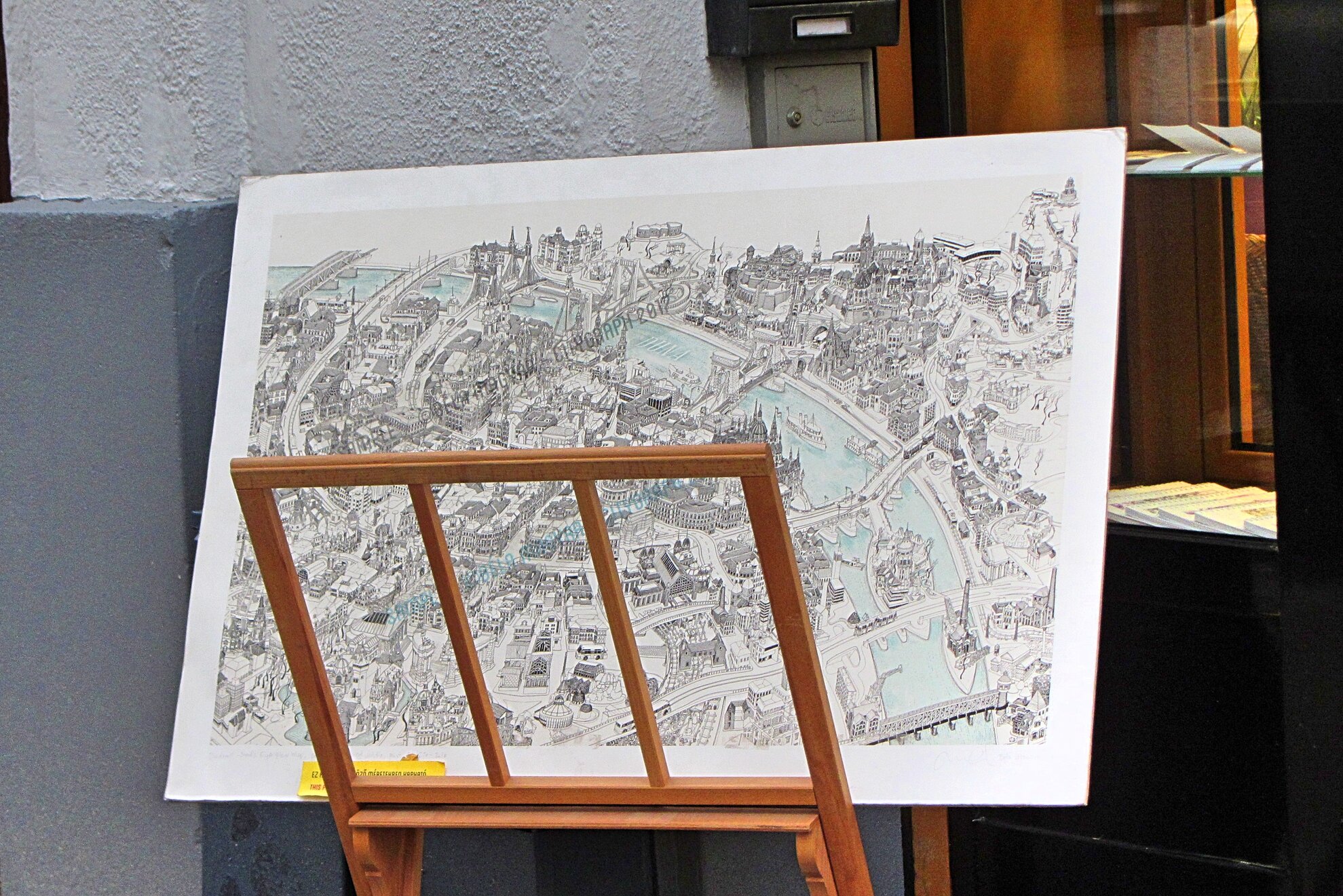
If hunger strikes, a handful of hangouts lining the street serves quick meals. Café Picard offers daily lunch specials of Hungarian staples, while Baritsum has strong café and creamy cakes. Your trip concludes at Kossuth Square, home to the neo-Gothic-style Parliament and the ornate building of the freshly closed Museum of Ethnography, now moving to a new location. During the holiday season, the whole square shines brightly under festive lights and a towering Christmas tree.
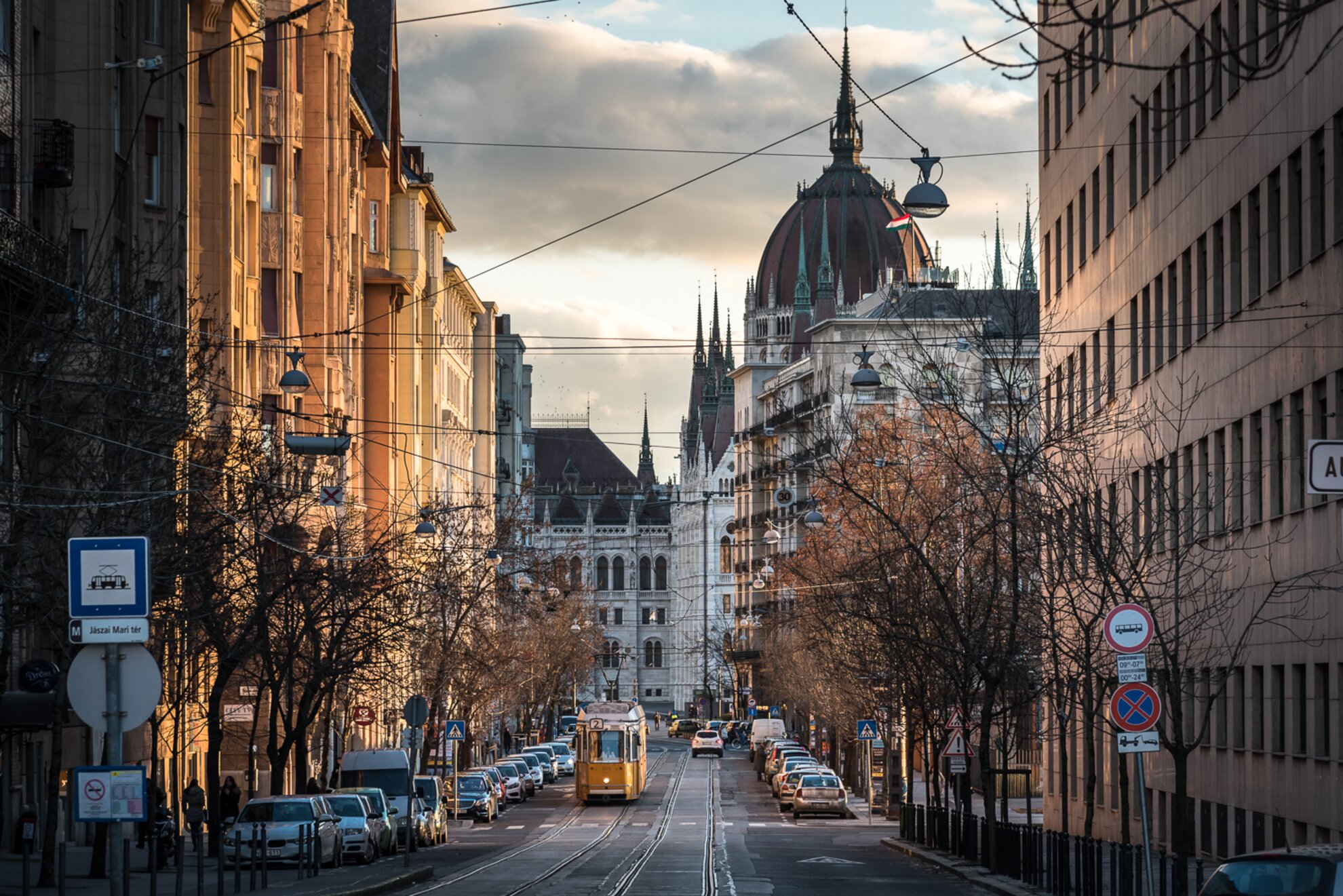
Shops found along the gallery-lined thoroughfare regularly join forces for thematic events, such as the Falk Art Forum Antique and Modern Art Festival every spring, turning the entire street into a free cultural jamboree for a day. Find out about upcoming events on Falk Art Fórum’s Facebook page.

